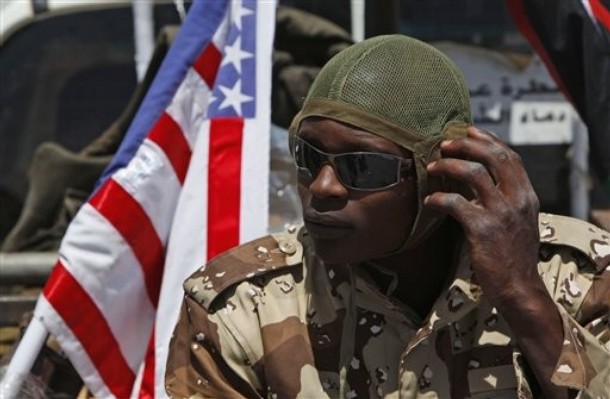
From John Barry, the Daily Beast: Officially, President Obama handed the lead role of ousting Muammar Gaddafi to the European members of NATO. For this he was criticized by Washington war hawks who suggested that Europeans working with a ragtag team of Libyan rebels was a recipe for stalemate, not victory.
But behind the scenes, the U.S. military played an indispensable role in the Libya campaign, deploying far more forces than the administration chose to advertise. And at NATO headquarters outside Brussels, the U.S. was intimately involved in all decisions about how the Libyan rebels should be supported as they rolled up control of cities and oil refineries and marched toward the capital, Tripoli. . . .
According to two senior NATO officials, one American and the other European, these were the critical U.S. contributions during the six-month military campaign . . .
• U.S. tanker aircraft refueled European aircraft on the great majority of missions against Gaddafi’s forces. The Europeans have tanker aircraft, but not enough to support a 24/7 air offensive averaging, by NATO count, around 100 missions a day, some 50 of them strike sorties. The U.S. flew 30 of the 40 tankers.
• When the Europeans ran low on precision-attack munitions, the U.S. quietly resupplied them. (That explains why European air forces flying F-16s—those of Norway, Denmark, Belgium—carried out a disproportionate share of the strikes in the early phase of the campaign. The U.S. had stocks of the munitions to resupply them. When Britain and France, which fly European-built strike aircraft, also ran short, they couldn’t use U.S.-made bombs until they had made hurried modifications to their aircraft.)
• To target Gaddafi’s military, NATO largely relied on U.S. JSTARS surveillance aircraft, which, flying offshore, could track the movements of rival forces. When more detailed targeting information was needed—as in the battles for Misrata and other towns defended by Gaddafi’s troops—the U.S. flew Predator drones to relay a block-by-block picture. . . .
In all, the U.S. had flown by late August more than 5,300 missions, by Pentagon count. More than 1,200 of these were strike sorties against Libyan targets.
• The administration largely stuck to Obama’s decision that the U.S. would not put boots on the ground in Libya (although the CIA did have agents inside Tripoli). British and French special forces were on the ground, training and organizing the insurgents—as were units from two Arab nations, Qatar and Jordan. But their communications relied on a satellite channel run by the U.S. And the U.S. also supplied other high-tech gear—NATO sources declined to describe it, but apparently it had never been given before, even to allied special forces.
• When a desperate Gaddafi began to launch Scud missiles into towns held by the opposition, a U.S. guided-missile destroyer offshore negated his offensive by shooting down the Scuds.
“President Obama may have taken the U.S. out of the direct combat role, but he certainly did not take American forces out of the front line,” Michael Clarke, director of the Royal United Services Institute think tank, wrote in a recent analysis. “The European allies were hardly ‘going it alone’ in this operation.” (photo: AP)
Image: ap%204%2026%2011%20Libyan%20rebel%20US%20flag.jpg
